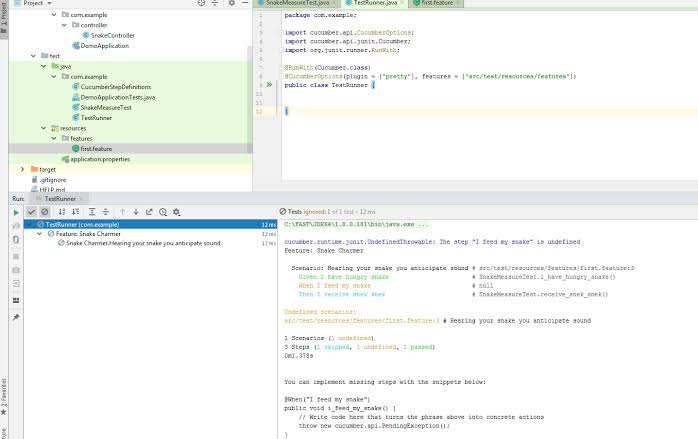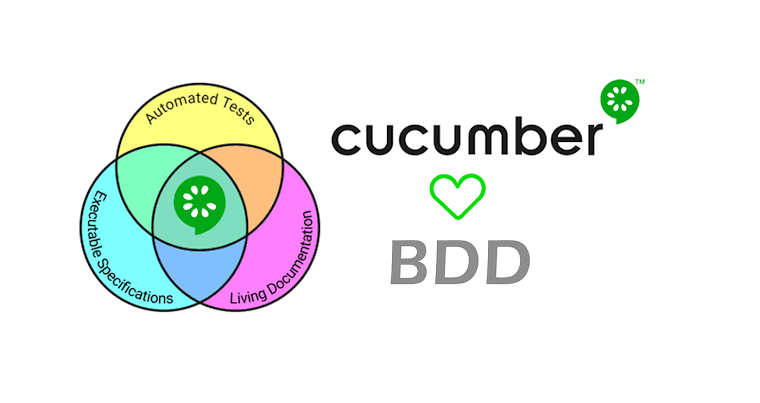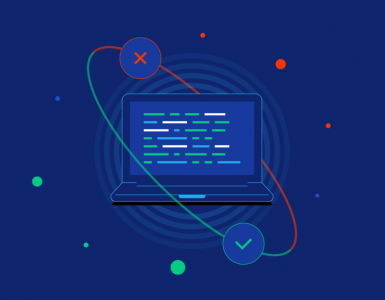Behavior-Driven Development (BDD) is a collaborative approach to software development that emphasizes communication between technical and non-technical team members. BDD ensures that development efforts are aligned with business goals and end-user requirements, fostering a shared understanding of the software’s behavior. One of the key tools in the BDD toolkit is Cucumber, a widely used framework for writing BDD scenarios in a human-readable language. In this blog, we will explore the fundamental concepts of BDD and delve into the intricacies of writing Cucumber scenarios.
What is Behavior-Driven Development (BDD)?
Behavior-Driven Development focuses on the behavior of the system from the user’s perspective. Unlike traditional development approaches, BDD encourages collaboration between developers, testers, and business stakeholders throughout the development lifecycle. BDD promotes the use of natural language specifications that are easy to understand for everyone involved in the project.
Introducing Cucumber Framework

Cucumber is a BDD tool that facilitates the collaboration between technical and non-technical stakeholders by allowing scenarios to be written in a human-readable language called Gherkin. Gherkin scenarios are easy to read and provide a clear understanding of the desired behavior. Let us take a look at a basic example of a Cucumber feature file written in Gherkin syntax.
gherkin
Feature: User Login
Scenario: Successful Login
Given the user is on the login page
When the user enters valid credentials
Then the user should be redirected to the dashboard
In this example, the feature describes the functionality of user login. The scenario outlines the steps to be followed: the user starts on the login page, enters valid credentials, and should be redirected to the dashboard upon successful login.
Writing Cucumber Scenarios: Basic Syntax
Cucumber scenarios are written using Given, When, Then, And, and But keywords. These keywords help structure the scenarios in a way that is easy to understand and follow. Here is a break down of the basic syntax:
Given: Describes the initial context or preconditions of the scenario.
When: Specifies the action or event that triggers the scenario.
Then: Defines the expected outcome or result of the scenario.
And/But: Used to add additional steps and enhance scenario readability.
Here is an expanded version of the previous example with detailed steps.
gherkin
Feature: User Login
Scenario: Successful Login
Given the user is on the login page
When the user enters valid username “john_doe” and password “password123”
Then the user should be redirected to the dashboard
In this scenario, the steps are more detailed, indicating that the user needs to enter a specific username and password.
Best Practices for Writing Effective Cucumber Scenarios
Writing effective Cucumber scenarios is crucial for maintaining readability and ensuring collaboration among team members. Here are some best practices to consider:
Use Descriptive Language: Write scenarios in a clear and descriptive manner, avoiding technical jargon. Use language that non-technical stakeholders can easily understand.
gherkin
Given the user is on the homepage
When the user clicks on the “Sign Up” button
Then the user should see a registration form
Organize Scenarios: Organize scenarios logically, grouping related steps together.
Scenario Outlines and Data Tables can be used for parameterization and reusability.
gherkin
Scenario Outline: User Registration with Valid Data
Given the user is on the registration page
When the user enters valid <username> and <email>
Then the user should receive a confirmation email
Examples:
| username | email |
| user123 | user123@example.com |
| testuser | testuser@example.com |
Integrating Cucumber with Automated Testing

Cucumber scenarios can be integrated with automated testing frameworks like Selenium for web applications. Let’s consider an example where Cucumber is integrated with Selenium to test a login functionality:
First, create a step definition file for the Cucumber steps:
java
import org.openqa.selenium.By;
import org.openqa.selenium.WebDriver;
import org.openqa.selenium.WebElement;
import io.cucumber.java.en.Given;
import io.cucumber.java.en.When;
import io.cucumber.java.en.Then;
import static org.junit.Assert.*;
public class LoginSteps {
WebDriver driver;
@Given(“the user is on the login page”)
public void navigateToLoginPage() {
// Code to navigate to the login page
}
@When(“the user enters valid username {string} and password {string}”)
public void enterCredentials(String username, String password) {
// Code to enter username and password in the login form
}
@Then(“the user should be redirected to the dashboard”)
public void verifyDashboardPage() {
// Code to verify if the user is redirected to the dashboard
WebElement dashboardElement = driver.findElement(By.id(“dashboard”));
assertNotNull(dashboardElement);
}
}
In this step definition file, Selenium WebDriver methods are used to interact with the web elements on the login page.
Advanced Cucumber Features and Techniques

Cucumber provides advanced features like tags, hooks, and data-driven testing to enhance the testing process.
Tags: Tags can be used to categorize scenarios and run specific subsets of tests. For example, you can tag scenarios as @smokeTest or @regressionTest and run only the tests associated with these tags.
gherkin
@smokeTest
Scenario: User Login with Valid Credentials
Given the user is on the login page
When the user enters valid credentials
Then the user should be redirected to the dashboard
Hooks: Hooks are used to set up preconditions and clean up after scenarios. Hooks can be used for actions like opening and closing a browser session, setting up test data, or capturing screenshots after test failures.
java
import io.cucumber.java.After;
import io.cucumber.java.Before;
public class Hooks {
@Before
public void setUp() {
// Code to set up preconditions before each scenario
}
@After
public void tearDown() {
// Code to clean up after each scenario
}
}
Data-Driven Testing: Cucumber supports data-driven testing using Scenario Outline and Data Tables. You can provide multiple sets of input data to test different scenarios.
gherkin
Scenario Outline: User Login with Different Credentials
Given the user is on the login page
When the user enters valid username “<username>” and password “<password>”
Then the user should be redirected to the dashboard
Examples:
| username | password |
| user123 | password123 |
| testuser | testpass |
Conclusion
Behavior-Driven Development, coupled with Cucumber, offers a powerful approach to software development, emphasizing collaboration, clarity, and automation. By writing clear and expressive Cucumber scenarios, teams can bridge the gap between technical and non-technical stakeholders, ensuring that everyone involved in the project shares a common understanding of the software’s behavior. With the integration of Cucumber and automated testing frameworks, development teams can achieve faster feedback, improved quality, and a more reliable software release process. Embrace BDD and Cucumber to enhance your development workflow and deliver high-quality software products to your users.







Add comment